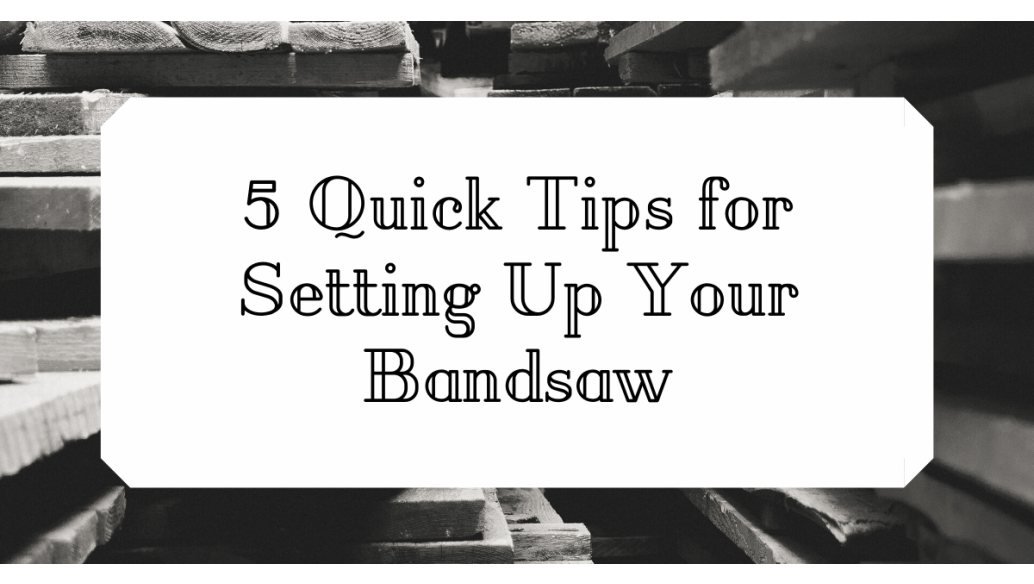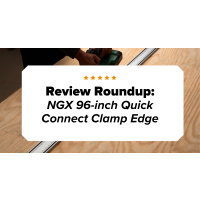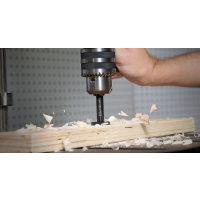Machinery in the shop is one of the best ways to increase your output and achieve reliable results during every build. That being said, every machine needs proper setting up when you get it, even if you get it used. This up-front time investment in your machine will result in faster, more accurate results, and you’ll be able to finish a wider variety of projects and builds more quickly.
One of your first choices for a machine might be a bandsaw. These come in a number of sizes, but most 14” to 16” model will do most jobs effectively. Makes and models vary, and you’ll want to do your research to make sure you choose a bandsaw that meets your needs now and in the future as you improve.
Even though you’re probably tempted to plug in and start working, it’s important to take time in the beginning to set up your new machine so it performs with you, not against you. Here are five tips to set up your bandsaw for quality, accurate cuts from day one.
1. Choose the Right Blade for the Job
There are a variety of different blades available for your bandsaw depending on the type of work you want to do, so it’s important to do a little research first. The wider the blade, the straighter the cut — and vice versa. Skinny blades are suitable for scroll work (and with some practice can even replace a scroll saw). The in-between blades are a mixture of TPI (teeth per inch), set (the kerf of the blade), and width.
Knowing this, you have to understand the work you want to do and how your blades will contribute to that outcome. So for instance, if you want to do resawing work, you’ll need to get the widest blade your machine can handle. The blade that comes with your saw is most likely not very good, but you can use it to practice or do rough work.
2. Get a Good Fence
In a bandsaw fence, you’re looking for a repeatable set-and-clamp mechanism that holds its parallel position to the blade. But not all fences are created equal. Some fences have micro-adjust capability while other simply clamp in place (so you may have measure twice and cut once before getting started). Choose one that meets your demand for accuracy, repeatability, way of working, and budget.
Reviews and comparisons are good tools here, but think about what you like and how you want to use the saw. Most saws these days come with a fence, so try out the basic offering and decide what you need after a few cuts.
3. Stay Safe with the Right Accessory Guides
Safety with machinery is always the number one priority, so it’s important to have several safety accessories to use with your bandsaw. A push stick is a must-have; you can either purchase one or make it yourself. Your push stick helps control your feed rate and keeps your fingers away from the blade.
You’ll also want a feather board or anti-kickback guide. There are several options to choose from here. One is the magnetic style — you can position it precisely, and when you have projects that don’t require a guide, you can easily remove it. Another good choice is one that has high-rise or stacking capabilities, since this keeps taller materials steady throughout the cut.
4. Set up Your Blade So It Tracks Correctly
The blade on a bandsaw is a continuous loop, so take care that the blade tracks accurately and consistently. This may require a little bit of a learning curve, but with some practice and good shop notes for each of your blades, you can get set up quickly and easily.
There are several ways to get your blade to track accurately. A popular method is to unplug the machine from power and de-tension the top wheel so you can install the blade. Once the blade is installed, begin to tension the blade.
To tension your blade, stand perpendicular to the bandsaw wheel and turn the top wheel with your hand so you can watch how the blade tracks. As the blade and wheel turn, you increase the tension using the tension mechanism on the outside of the back frame. (Note: some bandsaw wheels are cambered, and you need to make sure that the blade tracks correctly on that camber as you increase the tension.) Having tensioned your blade according to the manufacturer’s guidelines, you can adjust your blade guides.
When you have a bandsaw blade that tracks correctly, you get straight cuts that are easy to manage. If the blade does not track correctly, you will continually fight the blade from wandering. This is why blade tracking setup is so important.
5. Set up Your Blade Guides
Bandsaws have blade guide mechanisms directly above and below the table. These guides typically have guide blocks that should be adjusted just wider than the thickness of the blade to eliminate side-to-side blade movement. The top guide also has further front-to-back adjustment.
Blade guides should be adjusted so that they engage the back half of the blade. Having these guides set up correctly will help the blade as it runs through the open space between the top guide and table where the cutting is performed.
During your initial machine setup, set these guides as close together as possible. Your adjustable top guide should be as low and as close to the material as you can get it so the blade can do its job easily and efficiently. It also will expose the least amount of blade during cutting and aid as another point of safety while using the machine.
Even though there are a few more detailed steps to get your bandsaw in tip-top order, these five tips will help you achieve the setup you need for the blade you’re using and the cut you’re attempting. Take care to review and learn your machine’s safety recommendations while you familiarize yourself with how to perform these functions. The correct setup with the right blade will turn out results you’ll be proud of.
For more information and resources, check out these links from Stumpy Nubs Woodworking Journal:
Video: Are You Using the Wrong Bandsaw Blades?
Video: Taming Bandsaw Blades






